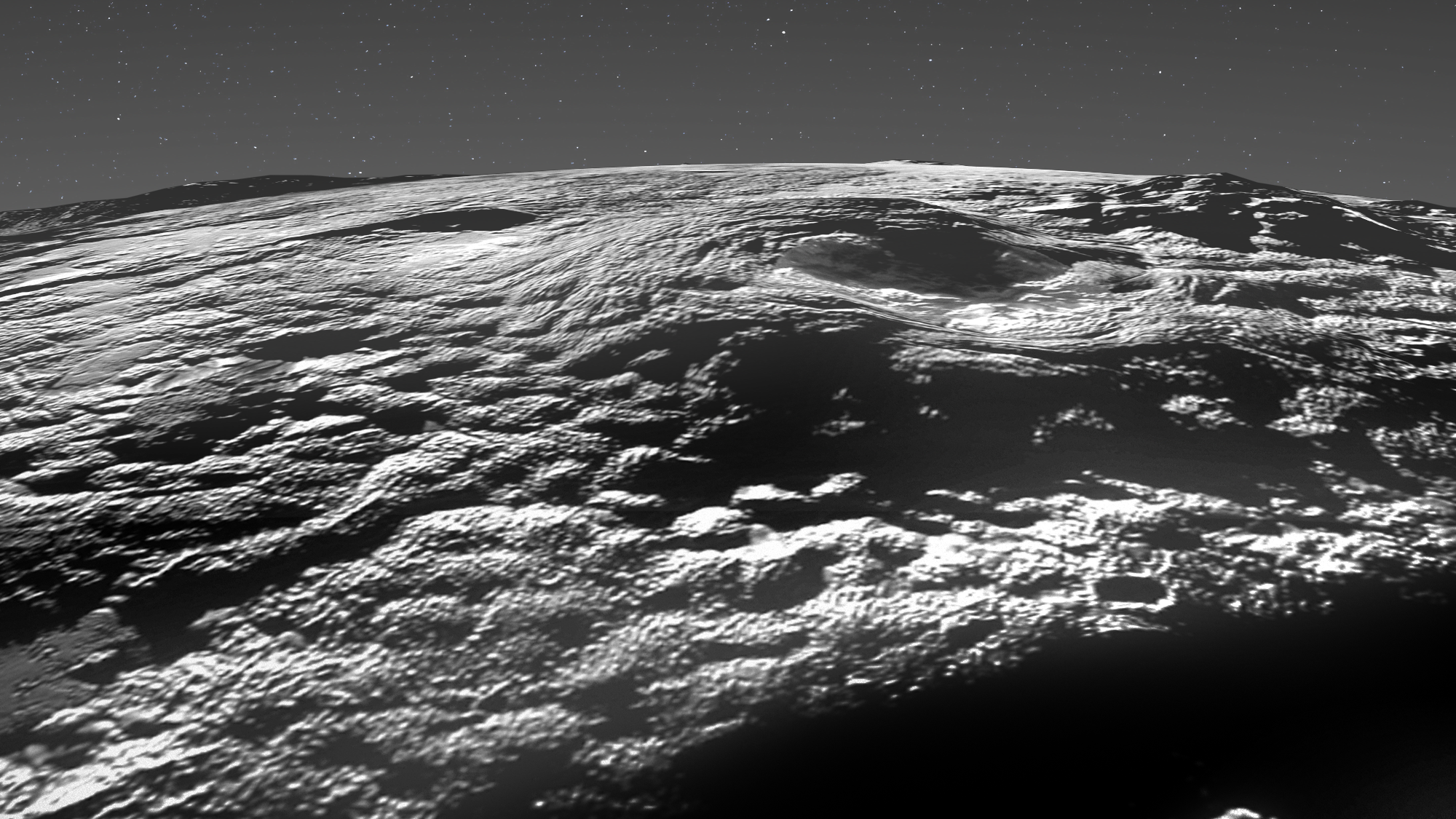Media release
From:
Planetary science: Ice volcano activity on Pluto *IMAGES*
An analysis of images of Pluto from NASA’s New Horizons spacecraft reveals an area of the dwarf planet dominated by relatively recent ice volcano activity, which contains volcanoes up to 7km tall. The findings are published in Nature Communications.
Cryovolcanism (ice volcanism) has been observed at several places in our Solar System and describes the placement of icy material via volcanic processes. Pluto has a rocky core but previous research has suggested interior heating would be at a low level for most of Pluto's history.
Kelsi Singer and colleagues analysed images of an area lying to the south-west of the Sputnik Planitia ice sheet, which covers an ancient impact basin of approximately 1,000km and is dominated by large rises with irregular flanks. The authors examined the geomorphology and composition of the area and suggest it was created by cryovolcanism and the material consists mostly of water ice. They describe many volcanic domes in the region, ranging from a few kilometres up to 7km tall, and around 10km to 150km across, with some domes merging to form larger structures. The authors suggest the inferred volume of a large structure known as Wright Mons is similar to the volume of Mauna Loa in Hawai’i — one of the biggest volcanoes on Earth. They indicate that creation of the terrain would have required several eruption sites and a large volume of material to create the ice volcanoes.
The authors observed the terrain is free from impact craters, which is in contrast to some other areas of Pluto’s surface. The authors hence propose that the cryovolcanic activity in this area must be relatively recent in Pluto’s history and may indicate that Pluto’s internal structure has residual heat or more heat than previously anticipated, to drive such cryovolcanic activity.



 International
International



